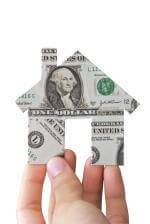Do I Qualify for an FHA Home Mortgage Loan?
Find out what an FHA loan is, who qualifies for one, and the pros and cons of 3 different kinds of FHA loans.
Laura Adams, MBA
Listen
Do I Qualify for an FHA Home Mortgage Loan?

In this episode I’ll tell you what an FHA loan is, who qualifies for one, and the pros and cons of getting 3 different kinds of FHA loans..
Click here to subscribe to the weekly Money Girl audio podcast—it’s FREE!
What Is an FHA Mortgage Loan?
Many people have heard of an FHA loan, but aren’t sure exactly how it works. An FHA mortgage is a loan that’s insured by a government agency called the Federal Housing Administration (FHA). The FHA insures loans that meet certain requirements and may apply to a variety of properties, such as single family homes, multifamily homes, and manufactured homes.
The FHA doesn’t actually make loans to consumers. Instead, it provides insurance to FHA-approved lenders so they feel comfortable making a loan to a somewhat risky borrower. Having FHA insurance protects lenders and reduces their risk of loss if a borrower defaults and doesn’t make their loan payments.
The FHA program is funded by homeowners who pay the mortgage insurance, not by taxpayers. I’ll tell you more about those costs in a moment. Having insured over 34 million properties since 1934, the FHA is the largest mortgage insurer in the world.
Who Qualifies for an FHA Mortgage Loan?
Not everyone qualifies for an FHA loan. You must be a legal resident of the U.S., have a valid Social Security number, and demonstrate steady employment for at least 2 years.
While you don’t need good or even average credit to qualify for an FHA loan, you can’t have extremely poor credit, either.
You must also meet certain financial qualifications: The total cost of the home—including the mortgage payment, mortgage insurance, property taxes, home insurance, and any homeowner association fees—must typically be less than 31% of your gross income. Additionally, the total of all your debt must typically be less than 43% of your gross income.
While you don’t need good or even average credit to qualify for an FHA loan, you can’t have extremely poor credit, either. However, in some cases, you can compensate for a low credit score by making a higher down payment.
You can even get approved if you’ve had a bankruptcy that’s over 2 years old or a foreclosure over 3 years old, if you’ve re-established good credit. Exceptions can be made by lenders depending on your circumstances.
The property you’re buying or refinancing must also pass inspection by an FHA-approved appraiser. If it doesn’t meet minimum FHA standards, either you or the seller must agree to make the required repairs.
What Are the Types of FHA Mortgage Loans?
There are many different types of FHA loans, including programs for first-time home buyers, disaster victims, energy-efficient renovations, Indian Reservations, condominiums, manufactured homes, refinancing, and urban renewal projects.

FHA Loan Type #1: 203b Home Mortgage Loan
The 203b Home Mortgage is considered the centerpiece of FHA’s single family program. It was designed to help Americans, who wouldn’t normally qualify for a conventional mortgage, buy or refinance a primary residence.
There are 3 major benefits of a 203b loan:
- Your down payment can be as low as 3.5%. Most conventional mortgages, on the other hand, require you to pay 5% to 20% of the price of the home.
- Your fees are limited. There are caps on some of the fees that mortgage lenders can charge.
- You don’t need excellent credit. As I previously mentioned, you may get approved even if your credit has a rocky past.
The amount you can borrow with an FHA loan has limits, depending on where you live. For more information, you can search by city, county, or state using the FHA Mortgage Limits tool.
FHA Loan Type #2: 203k Rehabilitation Mortgage Loan
The 203k Rehabilitation Mortgage allows homeowners and home buyers to finance up to $35,000 for repairs or upgrades. This program gives you cash to pay for improvements, such as necessary repairs found by a home inspector or an FHA appraiser.
For instance, if you’re a homeowner, you could use the funds to prepare your property for sale. Or if you’re ready to buy a home, you could use the extra money to make repairs, like painting, installing new flooring, or upgrading the kitchen, to meet FHA standards before you move in.
FHA Loan Type #3: FHA Short Refinance Mortgage Loan
The FHA Short Refinance Mortgage is designed for homeowners who are underwater, which means you owe more for your mortgage than your home is worth.
To qualify for the FHA Short Refinance you must:
- be current on your existing mortgage payments
- occupy the property as your primary residence
- not have poor credit
- not have a history of certain kinds of criminal activity
- have a loan that isn’t insured by the FHA or VA (Department of Veterans Affairs)
Here’s how it works: your existing lender must agree to forgive some of your debt so you owe no more than 97.75% of your home’s current value.
For instance, let’s say your home is worth $300,000, but your outstanding mortgage balance is $325,000. If your lender is willing to reduce your debt from $325,000 to $293,250 (which is 97.75% of $300,000), then you may be eligible.
The FHA would pay off your existing loan at the discounted balance, and issue you a new FHA loan. For more information, contact your existing lender or any FHA-approved lender.
What Are the Cons of an FHA Mortgage Loan?

You typically have to pay both an upfront and an annual mortgage insurance premium (MIP):
- An upfront MIP cost 1.75% of the home loan. For instance, if you borrow $300,000, you must pay $5,250 ($300,000 x 1.75%). It can be paid in full upfront, or added to your mortgage balance. This MIP applies no matter your loan amount or term.
- An annual MIP is divided by 12 and added to your monthly mortgage payment. It could range from less than one half of a percent to the current maximum of 1.55% of the loan amount. How much and how long you have to pay the annual MIP depends on the originating date of your loan, the amount, and your loan-to-value ratio.
Should You Get an FHA Mortgage Loan?
The bottom line with an FHA loan is that it’s loaded with hefty mortgage insurance premium fees. However, because of that insurance, lenders may offer lower interest rates and much more flexible qualification requirements. But not all FHA-approved lenders are alike; they may offer different rates and fees, even for the same loan.
Paying for a mortgage may be the largest expense of your life. So before you sign a mortgage commitment, do your homework and shop around.
Compare what you would pay for an FHA product against the cost of a conventional loan. And never be afraid to ask different lenders lots of questions so you make sure that you’re getting the best possible deal.
Get More Money Girl!
There’s a huge archive of past articles and podcasts if you type in what you want to learn about in the search bar at the top of the page. Here are all the many places you can connect with me, learn more about personal finance, and ask your money question:
- Google+
- Money Girl podcast on iTunes (it’s free to subscribe!)
- Email:money@quickanddirtytips.comcreate new email“>money@quickanddirtytips.comcreate new email
Click here to sign up for the free Money Girl Newsletter!
 Download FREE chapters of Money Girl’s Smart Moves to Grow Rich
Download FREE chapters of Money Girl’s Smart Moves to Grow Rich
To learn about how to get out of debt, save money, and build wealth, get a copy of my book Money Girl’s Smart Moves to Grow Rich. It tells you what you need to know about money without bogging you down with what you don’t. It’s available at your favorite book store in print or as an e-book for your Kindle, Nook, iPad, PC, Mac, or smart phone. You can even download 2 free book chapters at SmartMovesToGrowRich.com!
Real estate help image courtesy of Shutterstock.


